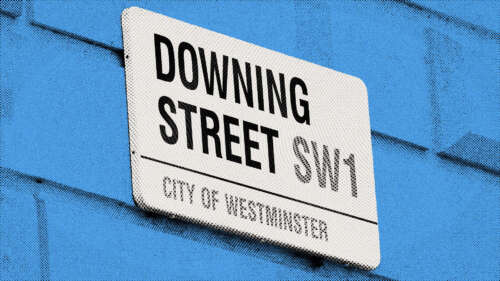From Sir David Attenborough to Greta Thunberg, this year’s United Nations Climate Change Conference (better known as COP26) saw the world’s most influential leaders and climate activists come together to discuss solutions to the climate crisis.
After two weeks of intense talks, the outcome of the conference received a mixed response. To understand whether the general public deemed COP26 a success or a failure, we analysed who was engaging with COP26 online.
A key takeaway from our analysis was the evident proliferation of COP26 into mainstream conversation. The graph below shows a sharp increase in mentions of COP26 in recent years, suggesting that the conference has evolved from an environmentalist-specific topic, to one that is discussed and debated by a much wider audience.
How did COP26 compare to previous years?
COP26 marked the most significant climate change pact since the landmark Paris Climate Agreement in 2015, which served as a major step in the implementation of targets and regulations to accelerate climate action.
At the time of signing, there was a general sense of optimism around the pact as it appeared that decision-makers around the globe had reached a collective awakening to the disastrous effects of global warming. In the years that followed, however, it became clear that the targets set in Paris were not ambitious enough. With very little progress made, key faces of the climate movement like Greta Thunberg began to arise to hold leaders accountable.
Having been delayed by a year due to the pandemic, by 2021 COP26 was facing increasing pressure to deliver on promises to limit global warming. Amidst this mounting pressure, we saw the climate conversation grow exponentially, with online mentions increasing 483% compared to COP25 in 2019.
The Response
What was the hottest topic?
Coming into COP26, there were a number of issues that needed to be addressed, namely global warming, sea level rise and deforestation, among others. According to our analysis, issues surrounding carbon emissions and rising temperatures emerged at the forefront of conversation, which points to a general view that Glasgow is the last and best chance to limit global warming to 1.5°C.
Among the other pressing issues was coal. Whilst some progress was made, COP26 Chairman Alok Sharma himself expressed disappointment over the watering down of the final wording of the Glasgow Pact on coal from ‘phasing out’ to ‘phasing down’, which has since sparked major debate around the weakening of COP26 ambitions.
Diversity was another key issue at this year’s COP. Tribal and indigenous communities from around the world have criticised climate negotiations for the lack of power awarded to those living on the front lines of climate change, which has led to diversity overtaking both deforestation and sea levels in terms of mentions.
Who was the most popular person?
There’s no doubt that a lot of the interest around this year’s COP was stirred up by the undeniable star power of those in attendance. Prince William, Leonardo DiCaprio and Emma Watson were just some of the famous faces who made an appearance in Glasgow, along with a star-studded array of billionaires and activists.
Boris Johnson emerged as the most spoken about person during the event, with other current world leaders such as Biden, Modi and Merkel also garnering significant attention as nations ramped up the pressure on their leaders to deliver.
Interestingly, we saw a largely positive evaluation of other speakers and guests at the event, including Sir David Attenborough, Greta Thunberg and Barack Obama. We also heard a lot of critiques, most notably pointed at Amazon and Blue Origin founder, Jeff Bezos, who took to the stage to pledge $2B towards ‘restoring nature’ after landing in Glasgow on his $65m private jet.
Which Countries were most engaged?
A record-breaking 39,509 delegates were sent to Glasgow this year, exceeding attendance numbers for both COP21 in Paris by over 9,000.
As the host country, the UK unsurprisingly had the most to say about the conference, generating over 1.5M mentions of the event during the two weeks, followed by other G7 nations including the US, Japan, France, Germany and Canada.
We saw high engagement rates from India and Australia, likely due to the prominent role their leaders played in the conference, as both countries expressed reluctance to ditch coal.
So, who cares?
We wanted to go beyond these general assessments of volume and engagement to understand the real-life audiences behind them. To do so, we analysed all the people in the UK posting and sharing content related to COP26 and ran them through the Fifty platform to segment them into tribes.
Here’s what we found:
Climate Consciousness is Mainstream
We found a large tribe of Entertainment Fans with much more mainstream interests, along with Sports Fans, Professionals and Creatives, confirming that environmentalism is making its way into mainstream culture.
Environmentalism is Political
Politics emerged as the number one interest across the entire audience, with both Liberals and Conservatives heavily involved in the conversation. Understandably, COP26 was inherently political, but it was interesting to see how strongly environmentalism has rooted itself in the political discourse.
Loud Youth
Tribes of University Students, Alternative Gen Z and Millennial Digital Professionals all indexed within the top 10 tribes, indicating the importance of climate issues for younger generations.
Not a diverse debate, but a diverse discourse
One of the biggest criticisms of this year’s COP was a lack of inclusivity, with many labelling it ‘the whitest COP ever’. However, in the discourse itself, diverse voices were some of the loudest, with our analysis revealing a wide array of ethnicities, sexualities and ages across the audience.
How did engagement evolve over the course of COP26?
Over the course of the two weeks, we saw a significant drop in engagement after the first four days as anticipation and excitement around the event began to wane. The fanfare of celebrities and world leaders initially sparked a lot of engagement in the first week, while the second week appeared to have a stronger focus on the nitty gritty of policy making.
What is perhaps most interesting about this graph is that there is no notable uptick at the end of the conference. Clearly, the hype and expectation in the lead up to COP26 was not matched by mass satisfaction and excitement.
How did the audience change between Week 1 and Week 2?
Following the red carpet rollout at the start of the conference, it is no surprise that tribes such as Entertainment Fans made up a larger portion of the audience. Whilst these audiences may have been drawn to the event for its star power, there’s no doubt that celebrity endorsement has raised awareness for climate issues.
In Week 2, we saw a higher number of educated audiences such as Informed Progressives, Cultured Creatives and Sustainability Advocates, indicating that those with greater political and environmental engagement were more likely to stick around once the initial hype had worn off.
So did people think it was a success or a failure?
Sentiment analysis uses Natural Language Processing (NLP) to assess the overarching emotion of a subjective piece of information. In this instance, we gathered all the posts, blogs and articles written about COP26 in the month of November and assessed the underlying sentiment behind them. Using this analysis, we were able to infer the overarching attitudes towards the event and its outcomes.
The dominance of ‘neutral’ sentiment proved very telling - as most people weren’t entirely sure how to feel about the final agreement. Interestingly, negative sentiment outweighed positive sentiment, implying there were more conclusions of failure than success. From this analysis, we can conclude that the final outcomes from COP26 didn’t quite meet expectations.
What do the audiences look like for success vs failure
Generally, we can see a similar and balanced audience between both sentiments, which tells us that the general consensus is that the conference was deemed neither a roaring success nor a catastrophic failure.
There was, however, a noticeable age difference between these two audiences. Whilst Informed Progressives, University Students and Entertainment Fans indexed significantly higher across our Failure category, our Success category consisted primarily of older audiences such as School Teachers and Healthcare Leaders, suggesting that younger generations were more critical of the final agreement.
Overall, the range of sentiments unearthed in our study reflected that of Secretary-General of the UN, who branded the conference a ‘compromised deal’ - whilst some progress was made, very few walked away completely satisfied.
To find out how Fifty can help you tap into your evolving audiences, book a demo with our team.





































